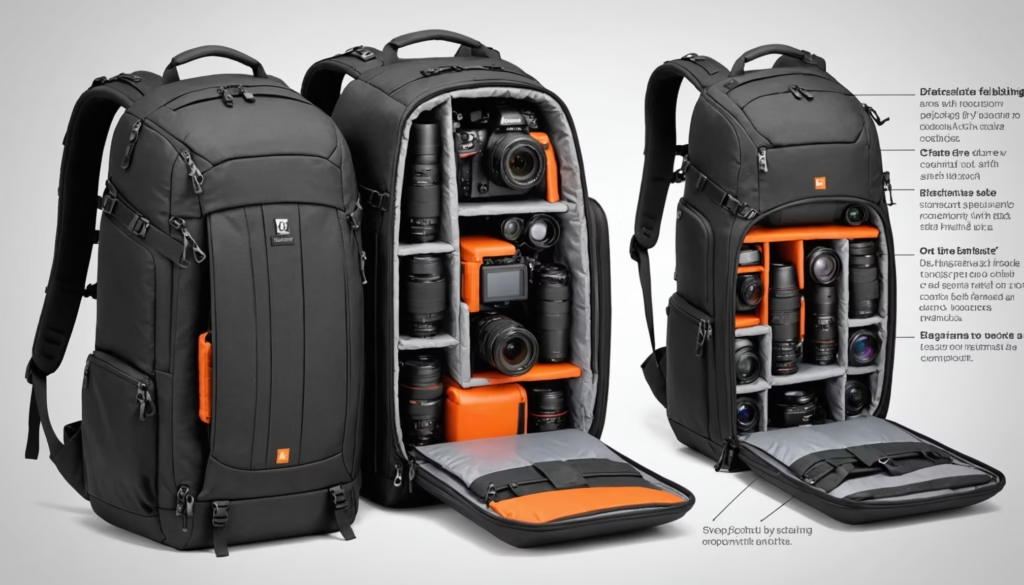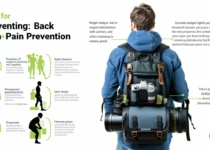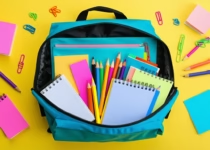Pros And Cons Of Front-Loading Camera Backpacks

When you weigh the pros and cons of front-loading camera backpacks, you’ll notice they make gear access lightning fast, but carry a bit more bulk than top-loading designs. If you travel often with your camera kit, the right backpack can make or break your shoot. In this article, we break down the benefits and trade-offs of front-loaders so you can pick a pack that fits your travel style and shooting needs.
What you’ll learn: We’ll cover what sets front-loading camera packs apart, key advantages and drawbacks, how they compare to other designs, plus tips to choose the best model for your journey.
Understand front-loading backpacks
What front-loading means
A front-loading camera backpack opens like a suitcase. Instead of reaching down through a top flap, you unzip a large panel on the bag’s front. You lay the pack flat, revealing padded dividers that keep your camera bodies, lenses, and accessories neatly organized. It’s a grab-and-go solution that cuts past the jostle of top-down packing.
Why photographers choose them
Photographers love front-loaders because they turn your bag into a display case. You can see every lens, filter, and charger at a glance. No more digging through layers or fumbling for that extra battery when a golden-hour moment arrives.
Explore key advantages
Here’s the thing, front-loaders have earned their hype for good reasons.
Quick gear access
- Open flat and grab your camera or lens in seconds
- Perfect for fast-paced shoots or crowded venues
- Ideal for street photography, events, and travel
Superior organization
Each item has its own compartment. You’ll avoid gear rattling and accidental collisions. Many packs include removable dividers, letting you customize your layout as your kit evolves.
Enhanced gear protection
The clamshell opening usually features well-padded walls. Your gear rests in a cradle instead of piling up, which reduces impact if you bump the pack or set it down hard.
Balanced weight distribution
By packing gear centrally and close to your spine, front-loaders help distribute weight evenly. That eases shoulder strain during long hauls, especially if you’ve got a tripod or drone in tow.
Versatile storage options
Most designs offer extra pockets for personal items. You can stash your phone, passport, or snacks separately from your camera gear, keeping lenses shielded from spills or crumbs.
Examine common drawbacks
No pack is perfect. Front-loaders come with a few trade-offs.
Bulky profile
Because of their clamshell design, these backpacks can be thicker and less streamlined. You may feel like you’re carrying a brick compared to sleek sling bags.
Longer zippers to maintain
With heavy use, the long front zippers can wear down or snag debris. It’s a good idea to keep zipper lubricant handy to prevent jams.
Limited top-access
Want a quick peek without laying your bag down? Front-loaders force you to open the whole panel, which isn’t ideal if you’re crouched behind a low wall or seated on the ground.
Potential water entry points
More zipper length can mean more spots for rain to sneak in. Check weather sealing and consider adding a rain cover when you’re shooting in wet conditions. For more rain-ready tips, see our guide on tips for using a camera backpack in rainy weather.
Heavier empty weight
Empty, front-loading bag can weigh more than a comparable top-loader. That’s extra pounds before you add your kit—something to watch if you’re close to an airline carry-on limit.
Compare with other designs
To see how front-loaders stack up against popular alternatives, check this quick comparison.
| Feature | Front-loading | Top-loading | Rolling backpacks |
|---|---|---|---|
| Gear access speed | Fast when bag is open | Slower digging | Moderate, on wheels |
| Packing flexibility | High customization | Good layering | Good but bulky |
| Weight distribution | Even, close to spine | Good, but varies | Depends on handle use |
| Weather sealing | More zipper exposure | Tighter flap closure | Good, waterproof shells |
| Ideal for | Travelers, event pros | Hikers, operators | Studio shoots, airports |
For a deeper dive into wheeled solutions, check out our article on the pros and cons of rolling camera backpacks.
Choose the right model
Picking the best front-loading pack comes down to a few key factors.
Check capacity and layout
- List your gear: bodies, lenses, filters, chargers
- Compare kit volume against pack specs
- Look for modular dividers so you can adapt over time
- For lens organization tips, see the best packing order for cameras and accessories
Look for durability and padding
Quality outer materials resist tears, while thick interior padding absorbs shocks. Make sure shoulder straps and back panels have adequate foam and mesh for airflow.
Consider travel policies
Will you use this as a carry-on? Confirm dimensions with your airline. If you travel internationally often, read our guide on how to choose a camera backpack for air travel rules to avoid gate-check headaches.
Test comfort and fit
Try the pack loaded if you can. Walk, bend, even climb stairs. Notice pressure points, strap slipping, or heat buildup. A proper fit means you’ll shoot longer without shrugging off the pack after a few hours.
Spot hidden features
Some packs include quick-access pockets for memory cards, built-in rain covers, or tripod attachments that flip away. For more on what to look for, visit hidden features to look for in camera backpacks.
Frequently asked questions
What are the main pros and cons of front-loading camera backpacks?
Front-loaders give you fast gear access, neat organization, and balanced weight, but they can be bulky, heavier empty, and have more zipper exposure in wet conditions.
Are front-loading backpacks suitable for hiking?
You can hike with a front-loader, but if you need top-down access while standing or want a slimmer profile, a top-loading pack may serve better on trails.
How do I carry a tripod with a front-loading pack?
Most packs have side loops or sleeves. Slide your tripod into the designated straps, tighten the buckles, and stow the legs so they don’t swing. For more tripod tips, check tips for carrying multiple tripods with a backpack.
Can front-loaders keep my gear dry in rain?
They typically seal well, but extra zipper length means more risk. Use a dedicated rain cover or choose a model with fully taped seams. Read tips for using a camera backpack in rainy weather for more.
Is it easy to grab a single lens quickly?
Yes, once you lay the pack flat you see every lens at a glance. You just unzip, open, and lift out the lens you need.
Will a front-loading backpack work for air travel?
Many meet carry-on size requirements but always verify dimensions. Some airlines gate-check larger bags, so pack essential gear in a smaller camera cube inside.
How do I prevent condensation inside my pack?
Warm, moist air trapped in padding can cause fog. Pack silica gel packs, keep batteries in sealed pouches, and unzip the bag every few hours to air it out. For more moisture-control advice, see how to prevent condensation inside camera backpacks.
Wrap up and next steps
Front-loading camera backpacks strike a neat balance between fast access and organized storage, making them a solid pick for travel photographers and event shooters alike. Sure, they add a bit of bulk and zipper maintenance, but the trade-off is a bag that feels like a portable gear case. Next time you shop, use this guide to weigh what matters most—whether it’s quick access, weather resistance, or carry-on compatibility.
Have you tried a front-loader on your travels? Drop a comment to share your experience or tip, and help fellow shooters make smarter gear choices.


